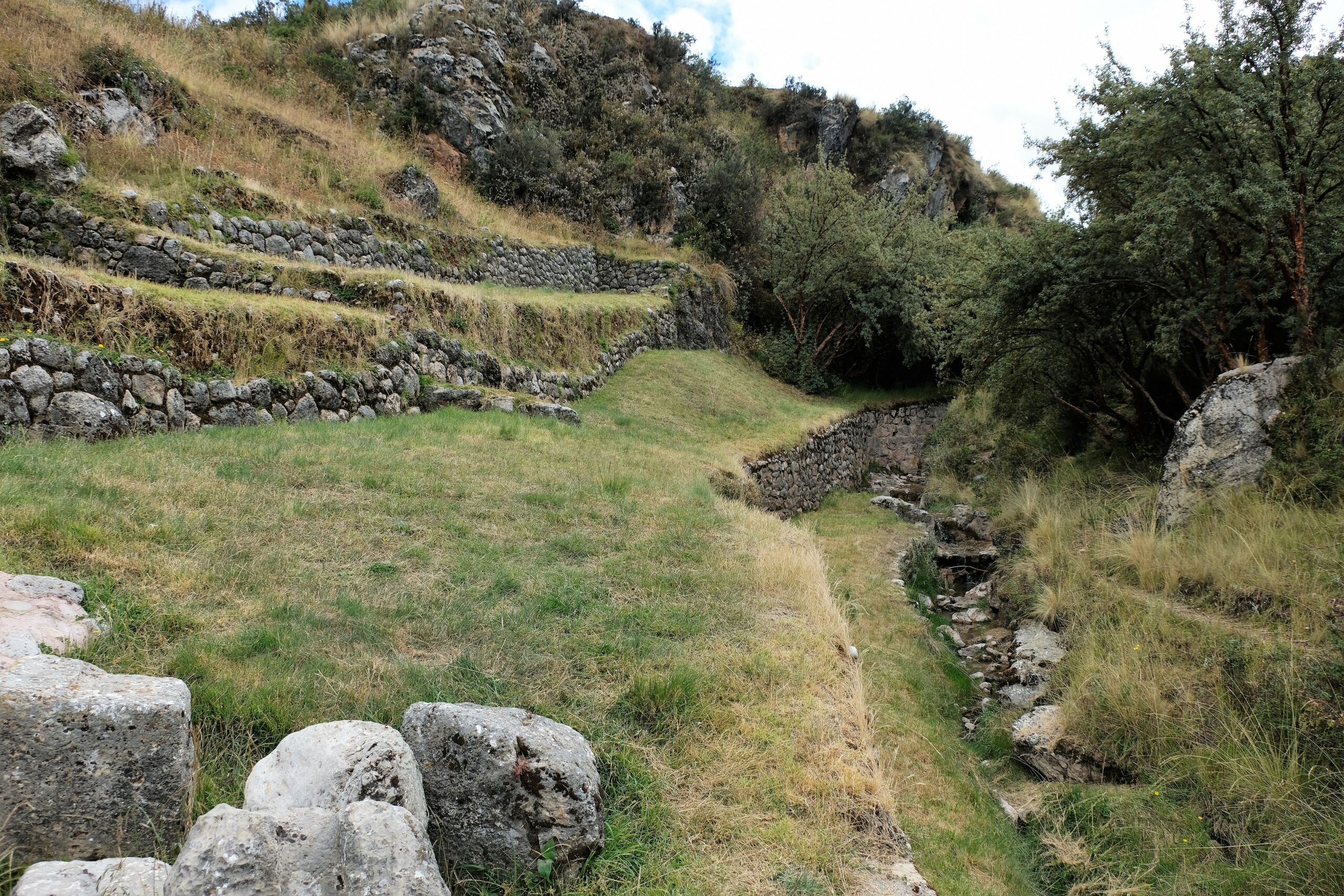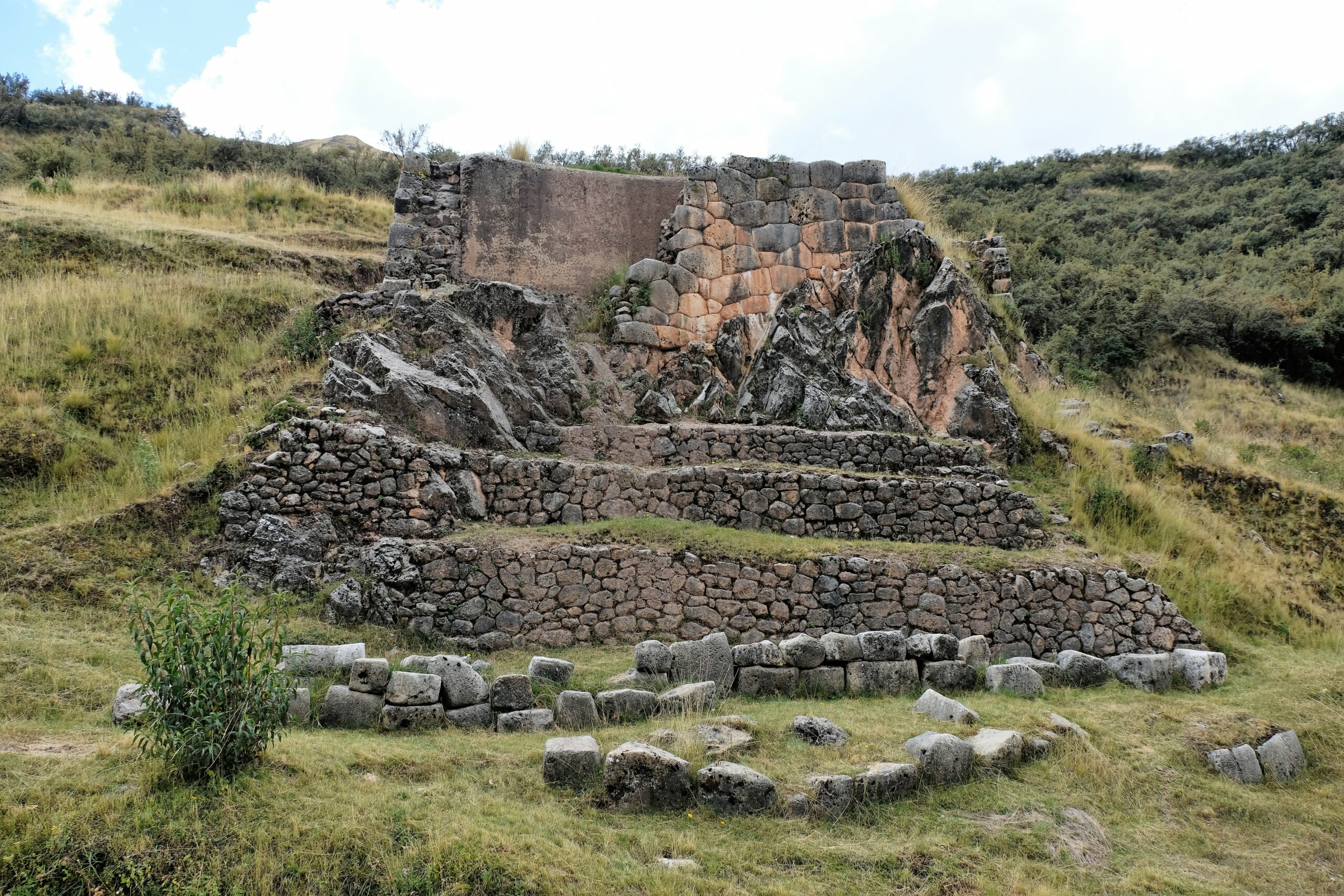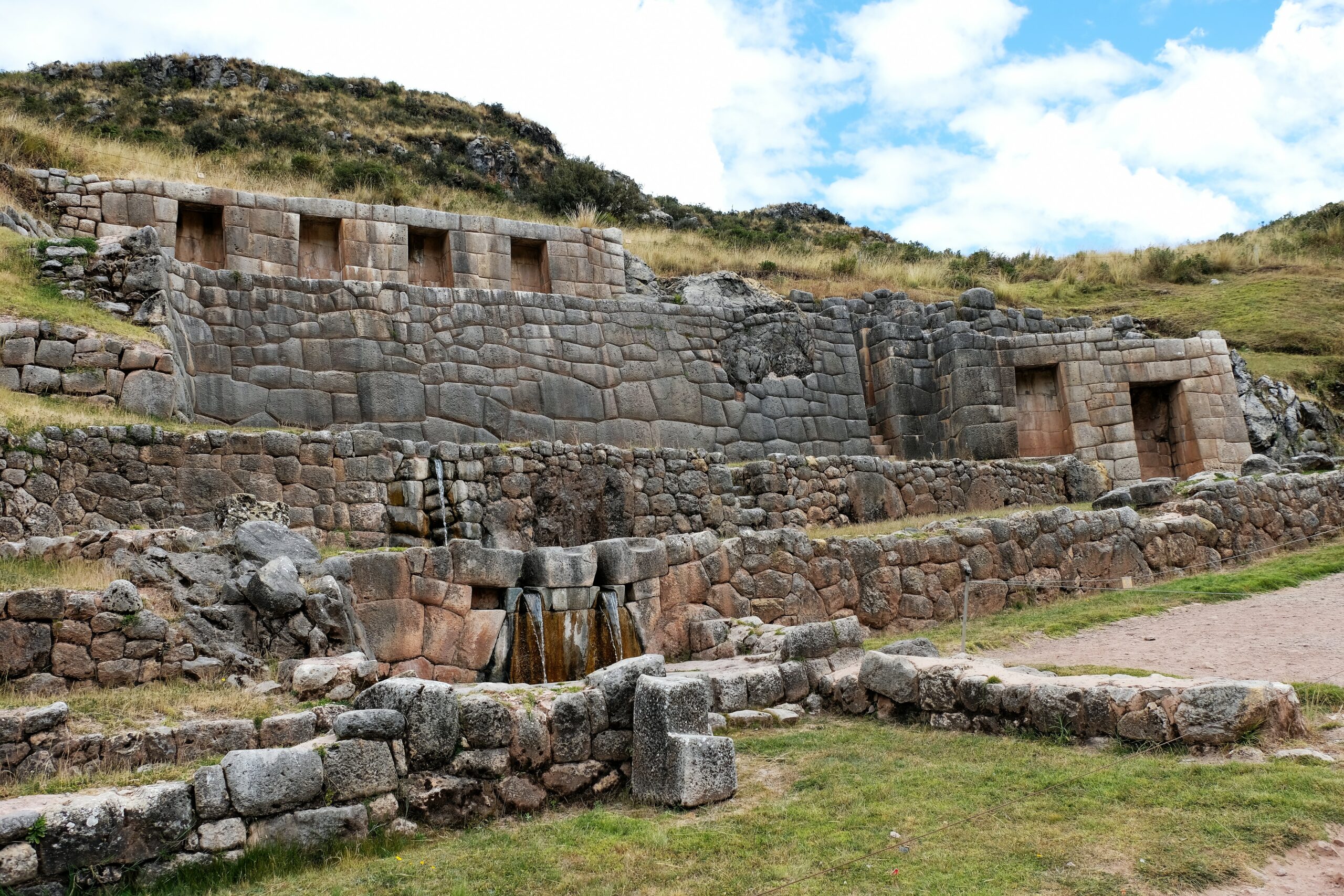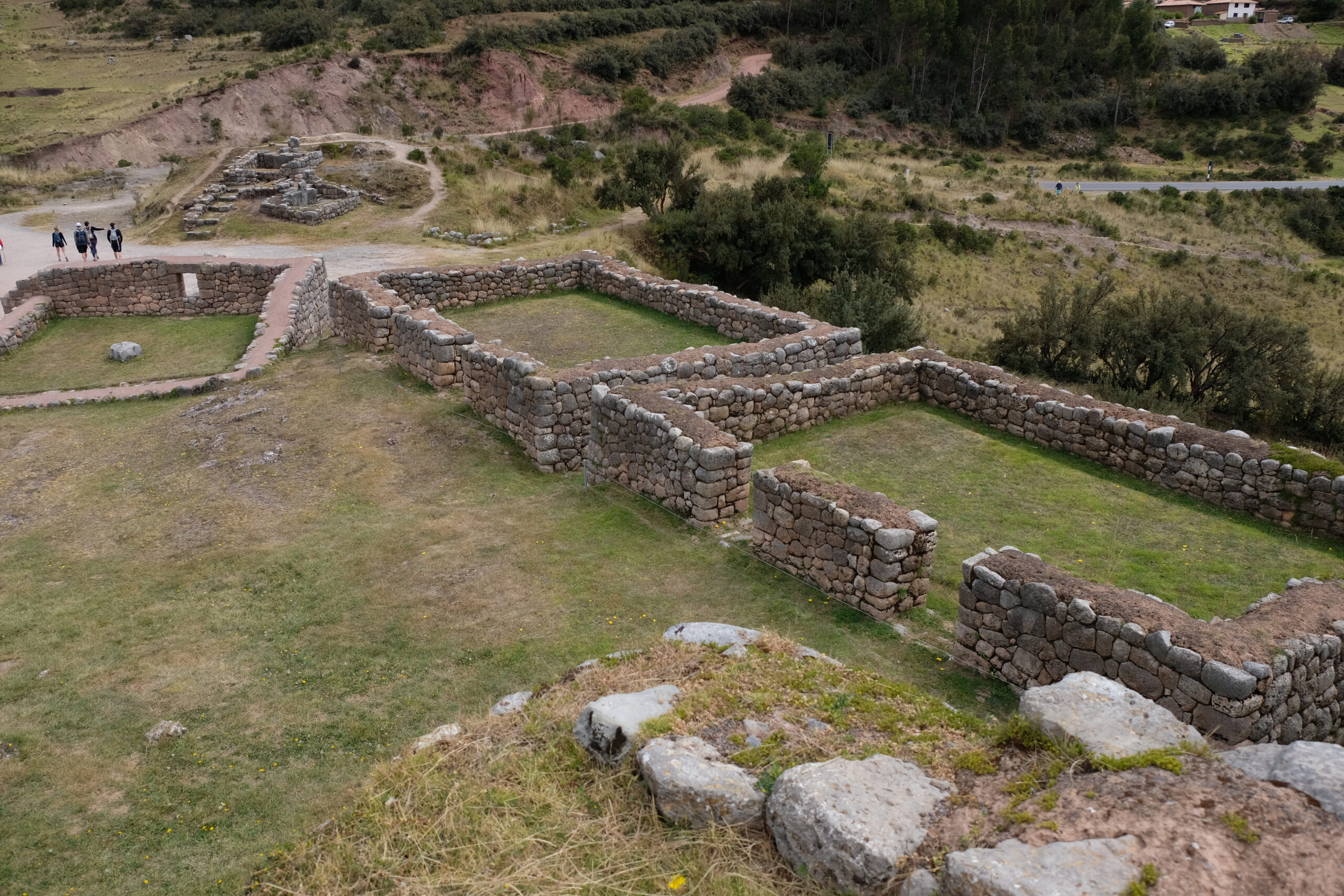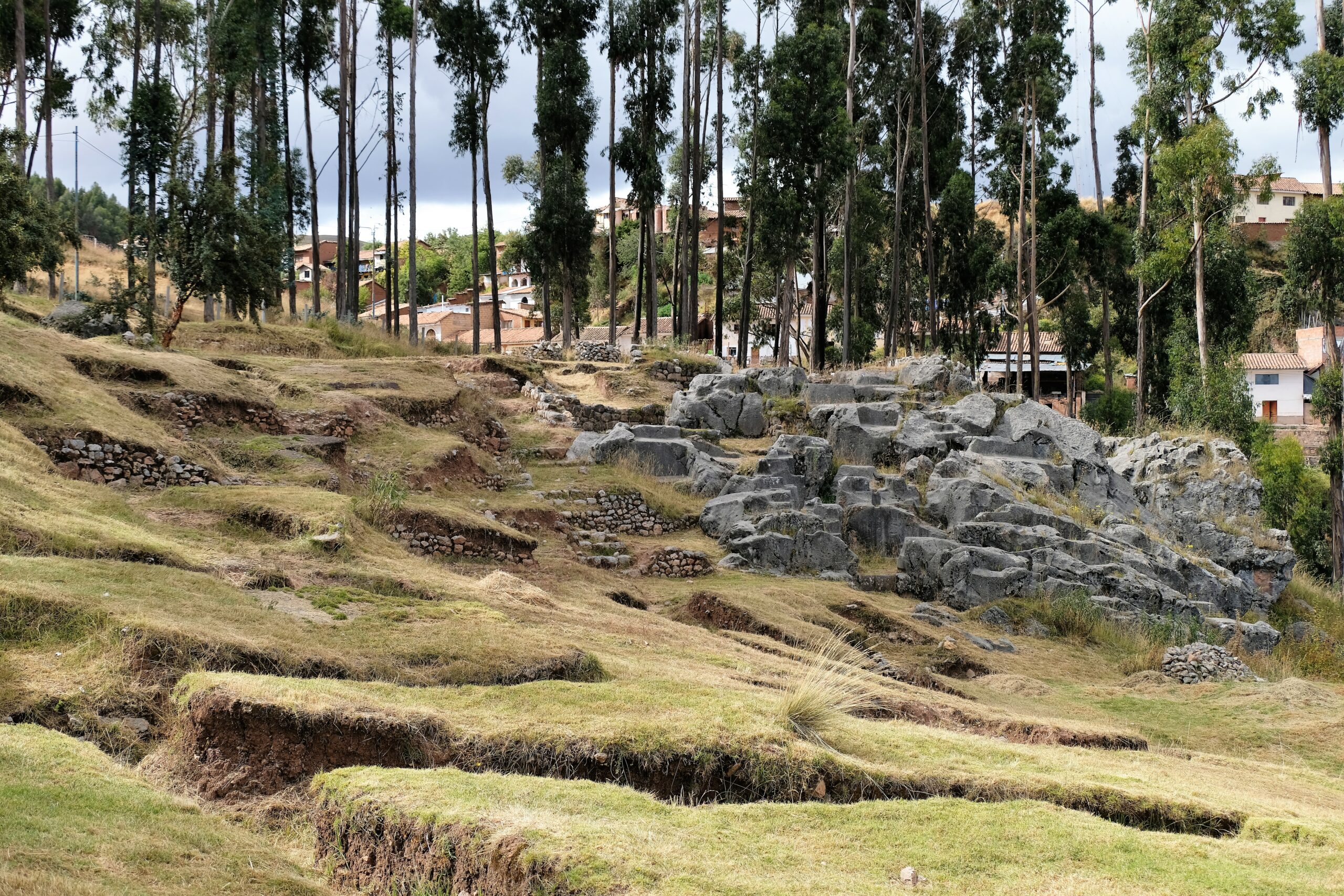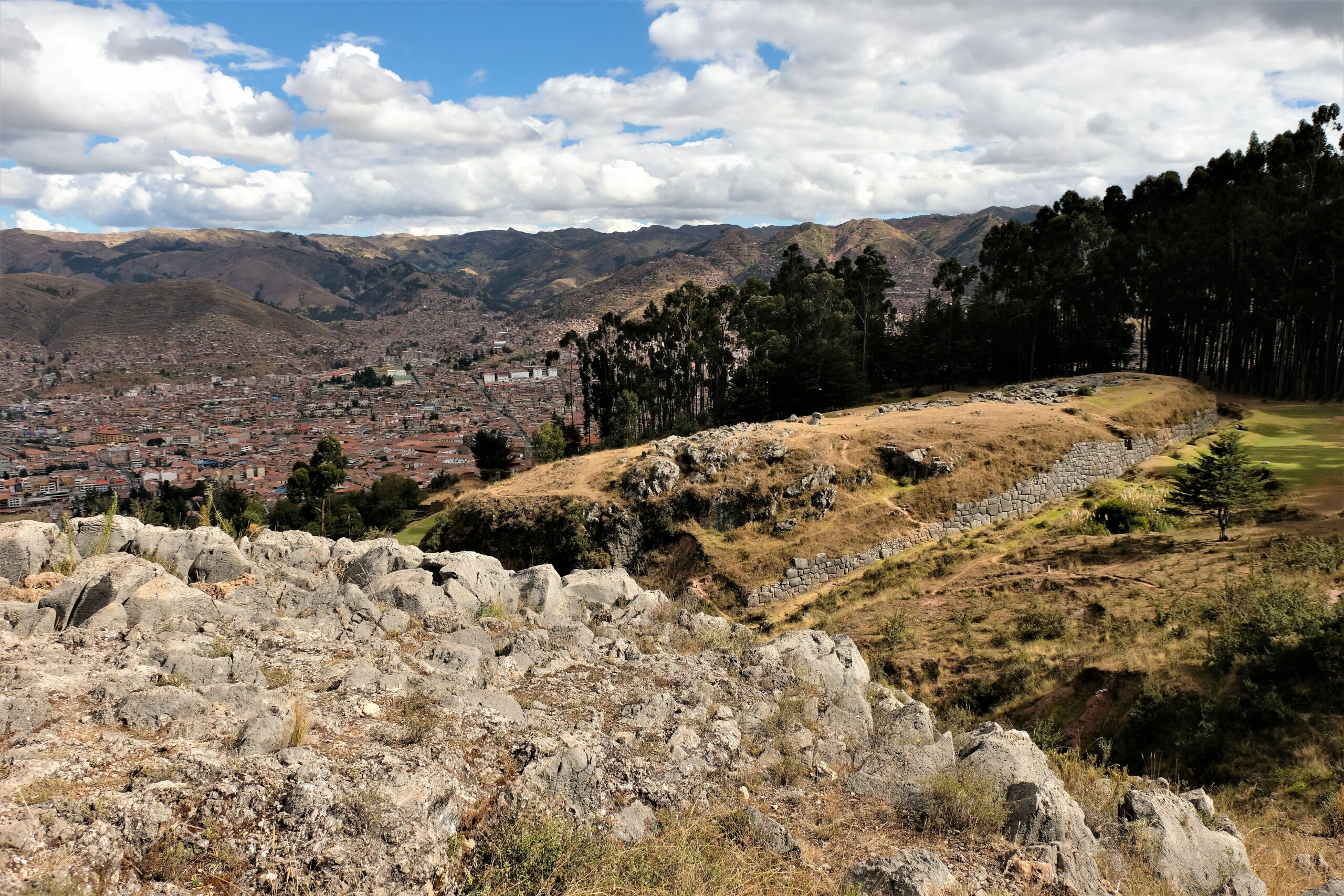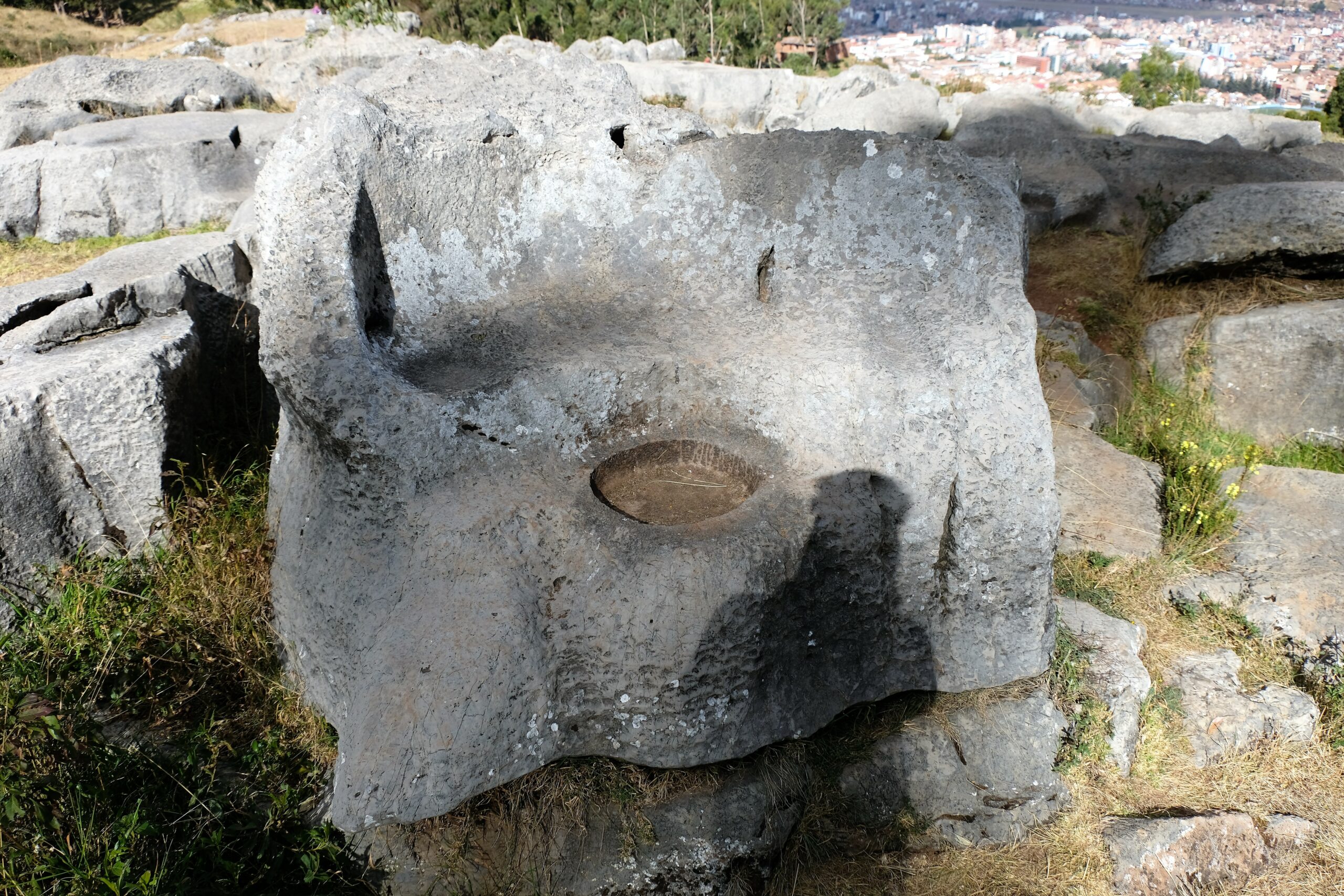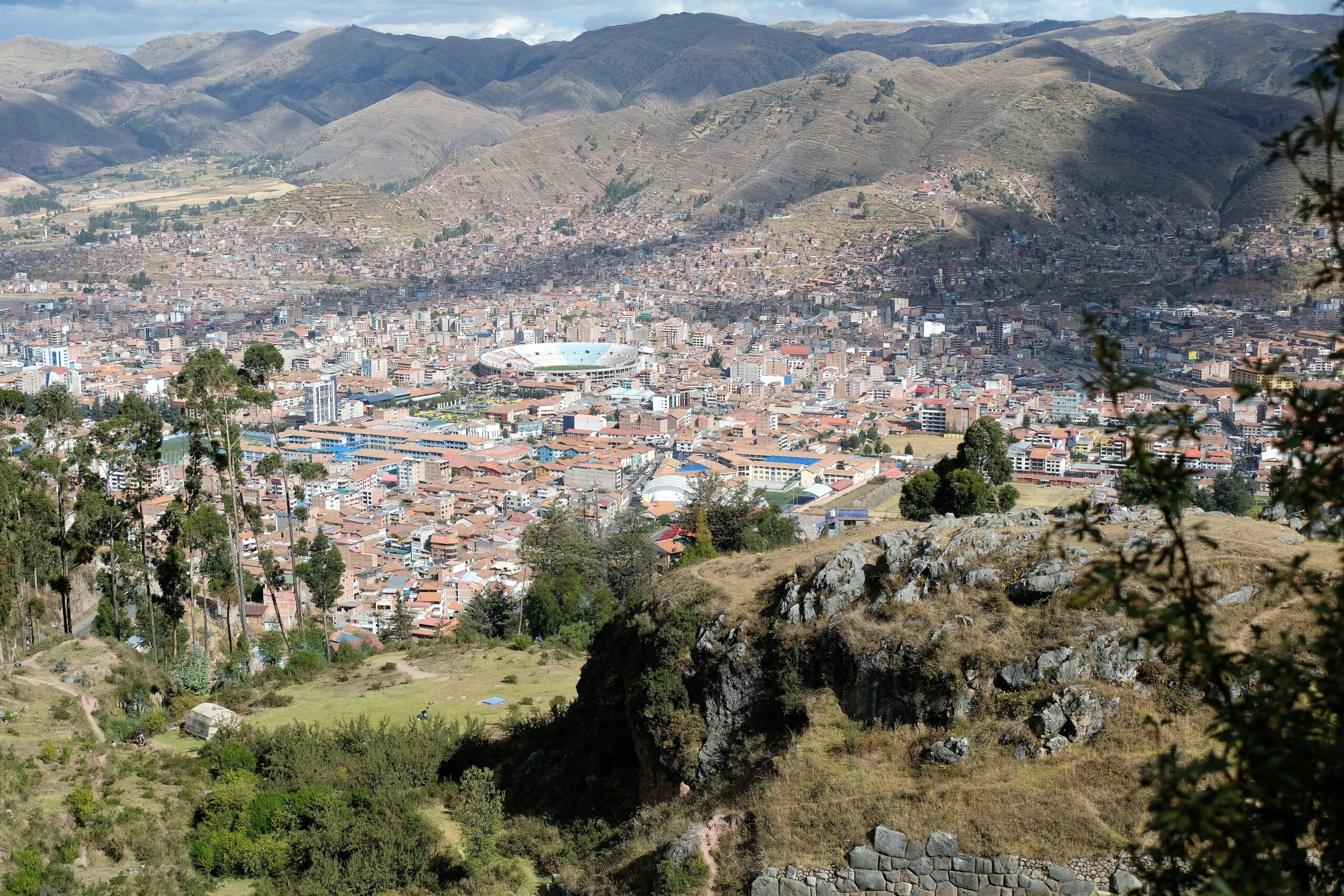After a nice dinner and a good night’s rest, Tambomachay, Puka Pukara and Qenqo were the sites for the day. Motivated from the previous day’s visit to Sacsayhuamán I was keen and ready for a full day…
Doing it differently
Previously I mentioned that if I could redo my “first” day I would. Sacsayhuamán was fantastic, however to good to start with. Similar to visiting the Sistine Chapel first, then ambling through the rest of the Vatican Museum disillusioned; everything afterwards no matter how great individually just doesn’t compare to the first. Despite what I’ve just said the Tambomachay, Puka Pukara and Qenqo are just as intriguing and beautiful, but on a smaller scale. In their own right they are well worth seeing.
Back to me redoing my first day. My suggestion would be to do all four sites in one day. Starting with Tambomachay, then Puka Pukara, followed by Qenqo (not forgetting Qenqo Chico) culminating in Sacsayhuamán to cap the day off in spectacular style. All this can easily be done in one day with a reasonably start to the day. If you use the bus or a collectivo (much more about these later) to speed up the day, then the four sites won’t even take up the whole day. Even if you walk like I did, one day is very doable. Including walking around the sites I’d say the total distance I covered was about 10 km; noted, I try my best to explore and cover every inch of a site, so my distance covered is more than the average.
Getting to Tambomachay, Puka Pukara and Qenqo
To be brief, almost all busses or collectivos going to Pisac (I visited there a few days later) will be able to drop you off at either. Having had a reasonably earl start to the day, Coco (the owner of my B&B) gave me brief directions to get to the bus stop. Go past Estadio Universitario on your left (a long wall on your left) and the stop is not long past the stadium. You may be able to get the bus from elsewhere, but I liked the idea of walking through the town.
Regrettably, I stopped over a Plaza de Armas to get another morning coffee. Nothing against high street chains, I just prefer independent shops. Moving on, literally, the walk to the bus stop from my B&B is just over 1.6km. The first bus stop I stopped at and waited for 20 odd minutes was incorrect, I hadn’t gone far enough. Though I wasn’t 100% confident that I was incorrect as I had asked one of the bus drivers, and through our mix-mash of English and Spanish I deciphered I needed to go further down the road (my Spanish is elementary at very best).
Complying with his advice I headed further down the road. The second stop looked a lot more promising, located at Paradero Servicentro. Part of Coco’s instructions was I need to get a blue bus and that it was past the long wall of the University Stadium (Estadio Universitario). After waiting round for about 45 minutes and many broken Spanish conversation I realise I was again at the wrong bus stop. In fact, I had passed the correct stop.
Finally…how to get there
This is the bus stop I eventually used…I think. If not, then it’ in the next road Callejon Retiro. The trip cost about $1.40 and Tambomachay is just shy of 10km from the bus stop. As we wound up the roads leading of the Cusco the bus emptied. A little nervous that wasn’t on the correct bus, I checked with the bus driver a few times that we were indeed going to Tambomachay. Forgetting to mention that I must have wasted nearly 2 hours – my fault though. In any event I got to see parts of Cusco that most tourists don’t.
Prologue
Concerning actual facts about Tambomachay, Puka Pukara and Qenqo is nearly impossible. No matter where you look for information the overriding terms found are “maybe”, “theory”, “speculation” and so on and so on – I think you get my drift. Reasons for this are twofold. Firstly, the archaeological sites were extensively dismantled &/or deliberately desecrated by the Spanish Conquistadors; notable attention was paid to religious sites. Secondly, the Spanish’s virulent pursuit and enforcement of ceasing the Incas beliefs; instead instilling Catholicism.
Inca ceremonies and traditions stopped – control the flow of information and you control the narrative. Likely the most comprehensive and accurate sources comes from an unlikely source, a Spaniard, Juan de Betanzos. He was the interpreter for Francisco Pizarro and married and Inca royal Cuxirimay Ocllo after the assassination of Pizarro (a story for another time). Pizarro took “Dona Angelina” (she changed her name after her husband’s execution) as his mistress (they had two children together) after he had executed her husband Atahualpa (same person in my previous post).
Juan de Betanzos wrote a two-part chronicle of the Inca called Narrative of the Incas. Part 1 covered pre-Spanish arrival and Inca history; the information came from his wife. Part 2, probably more interesting, covered the Spanish conquest, importantly mainly from the Incas viewpoint.
Returning to my prologue. Accurate details about Incas sites are mostly conjecture, but not all. What information we do have just adds to the intrigue. My epilogue to finish off this prologue is, with such magnificent historical sites I think the wider-world along with the Peruvian government should substantially invest to explore these sites more thoroughly – it goes without saying with the utmost care and sensitivity. There is so much more that could be learned and explored .
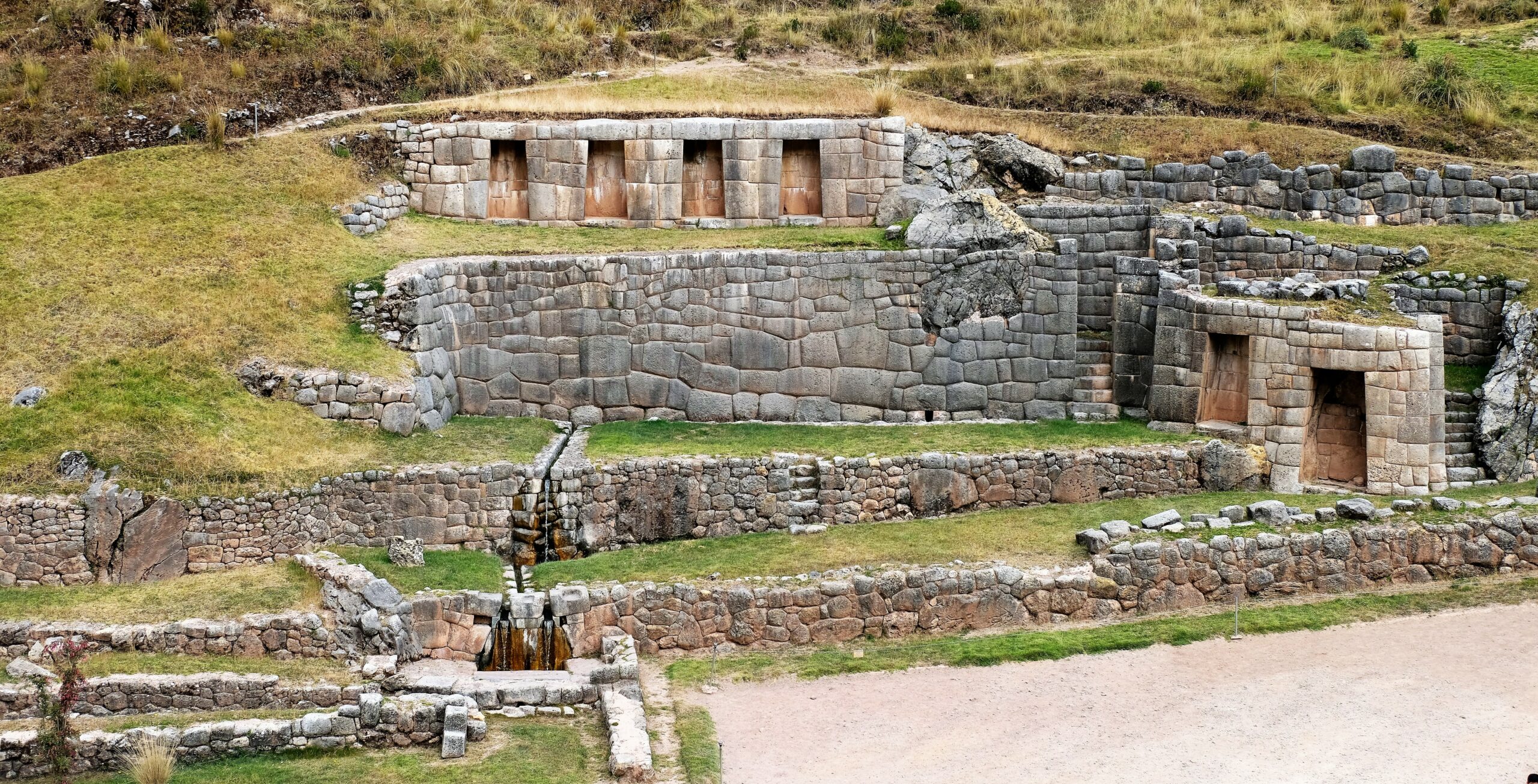
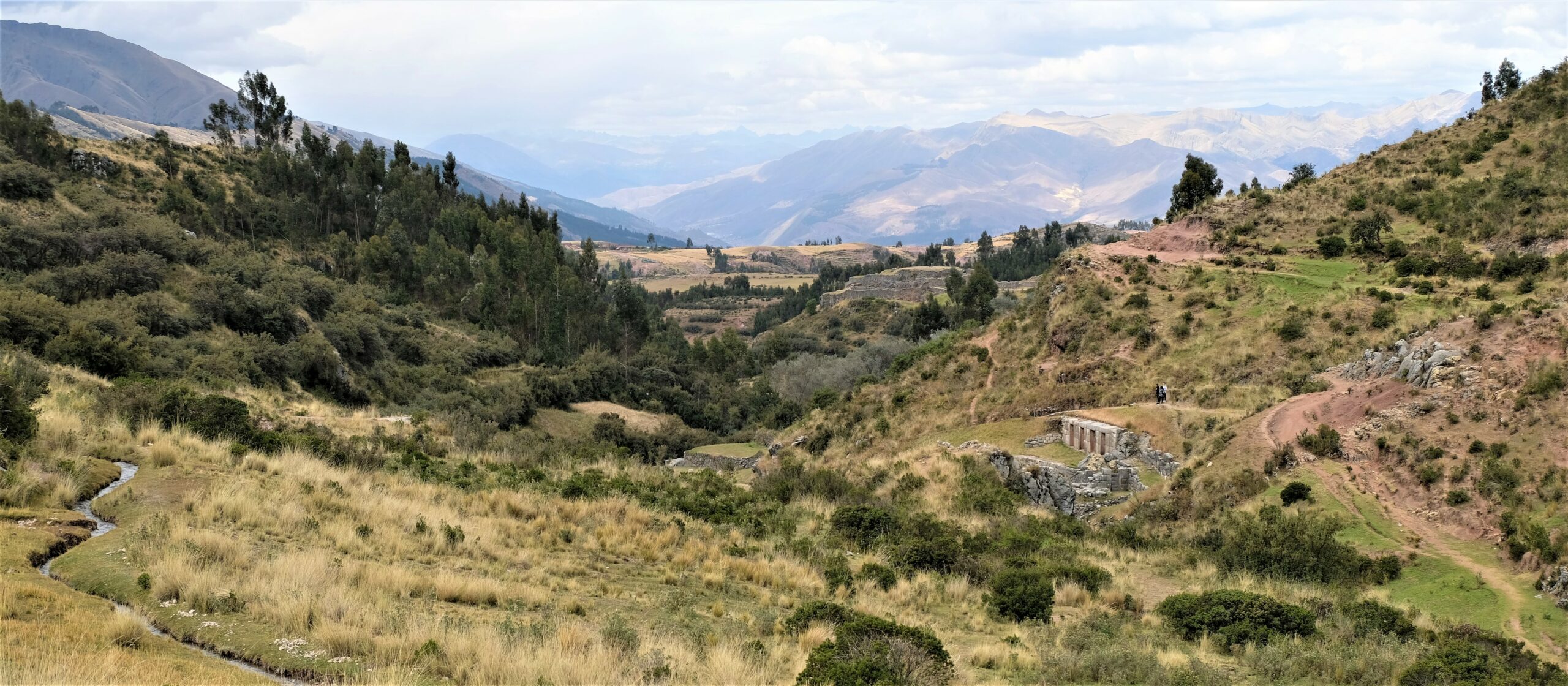
Tambomachay
Undoubtedly Tambomachay had something to do with water, that is undisputed. But what!? Most common theories are a spa resort for the Inca elite, part of an outpost for the military, a sanctuary for weary travellers to rest and freshen up or a Temple of Water. The military outpost reasoning is because Puka Pukara, definitely a military complex is only 100m away. I beg to differ; the construction at Tambomachay is far superior and elegant than Puka Pukara. Comparing the two, you don’t need to be an expert to see that. The Spanish called Tambomachay, El Baño del Inca (“the bath of the Incas”). Except, there are no baths.
It’s a small site, with most people only spending a few minutes there, at most 20-30. That’s a pity because to me, the most interesting parts are a little further up on the hill. Here you can hear the trickling of water hidden from eyesight running through Inca waterworks. These aqueducts or water channels start far up in the hills, weaving through the landscape like a snake through the grass. I found (heard) two small cascades hidden but could see nothing through the dense vegetation or, they were meant to be hidden. The water runs calmly yet fast.
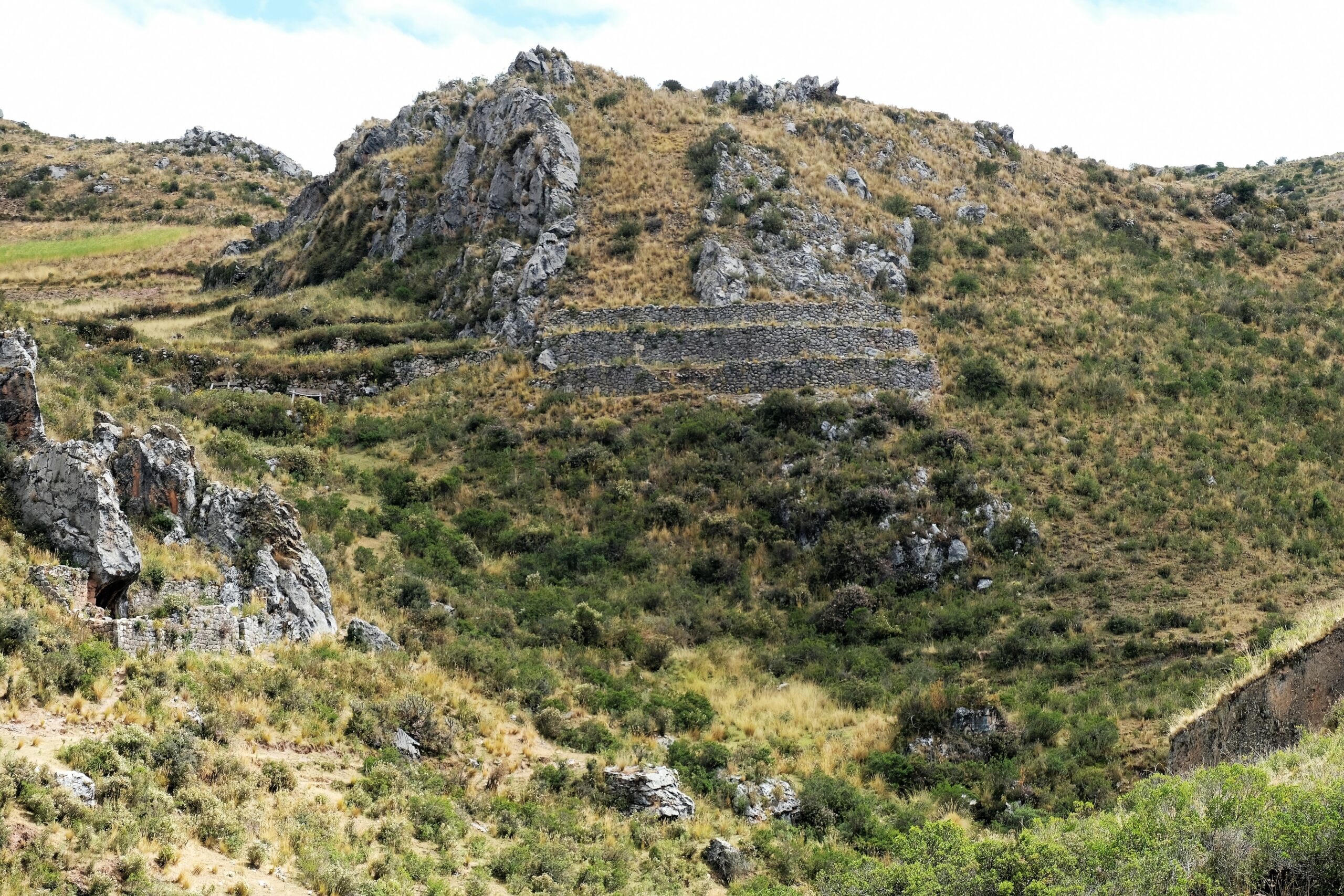
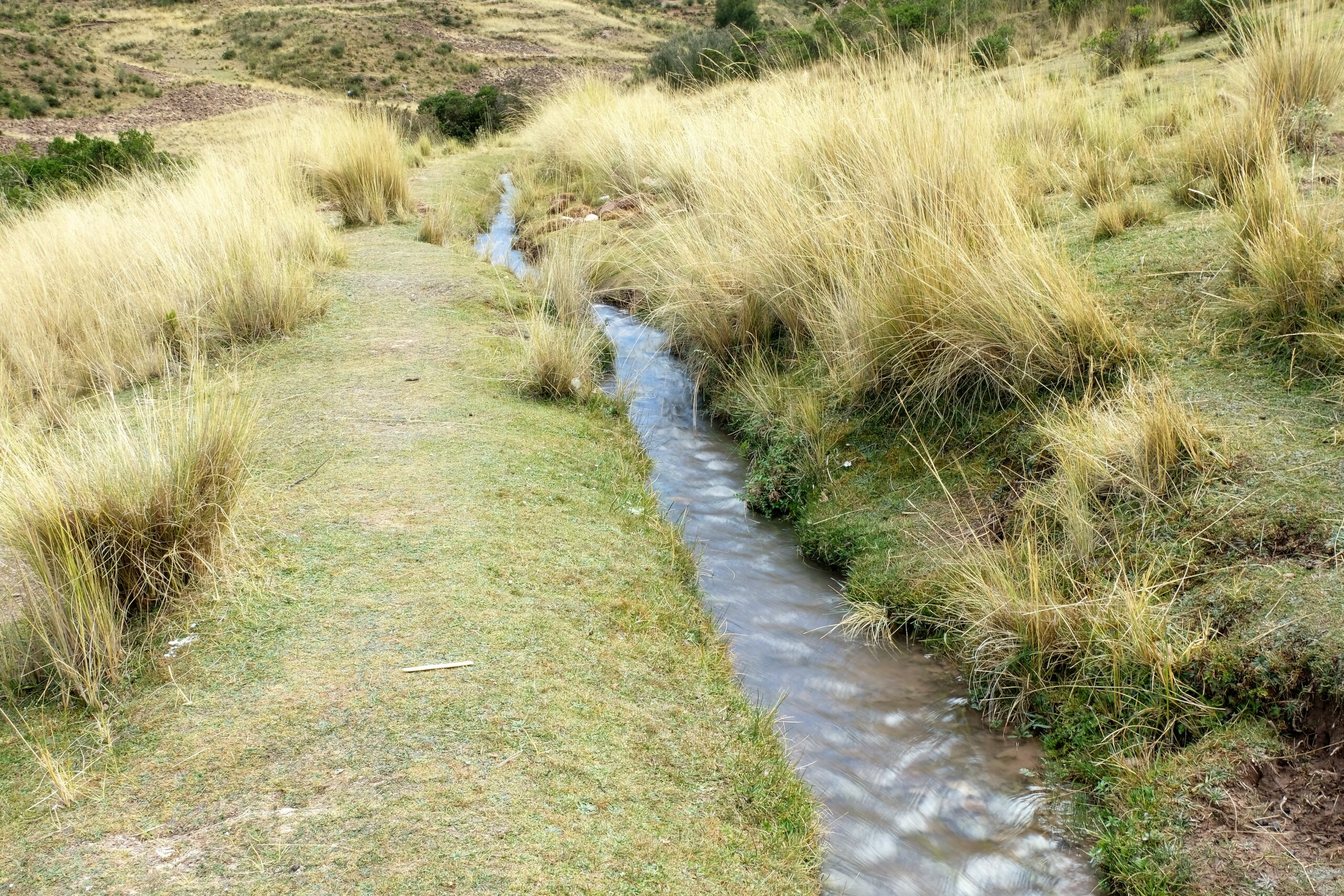
These waters, along with those that flow out of the fountains at Tambomachay come from natural springs. To my knowledge they have never dried up. Of those (or the) that supply the main fountains their source and location isn’t know; they feed the fountains from behind the walls.
Translated from Quechua, “tampu” mean inn or guest house and mach’ay means cave, or machay meaning drunkenness. Tampu’s are typically associated with military administrative buildings placed along the road; like a combination of a toll road and security checkpoint. Taking that into consideration, maybe Puka Pukara was the checkpoint and housed the military, and Tambomachay was used as a resting point for the travels. GRRRRR it frustrates me not knowing! Still, I think the place is to nice for travel lodge.
Puka Pukara
Crossing the road at Tambomachay, Puka Pukara sits firm and dominant on the side of the hill. Little is in doubt (well maybe there is a little) as to what it was, it’s name directly translates to “red fortress”; puke means red, pukara means fortress. There are two main thoughts on its construction. Firstly, it was built and latter expanded in a hurry. Secondly, the hole site was built in a hurry. Reason being, the majority of its construction is of a lower standard; smaller rocks, not fitted as well and general architectural lacking.
Who build it? No one really knows, it could have been Pachacutec / Pachacuti – the ninth Sapa Inca (circa. 1418 – 1471). He was not just any Sapa Inca, he is probably the first true ruler of what is now referred to as the Inca Empire. Though there is no definitive proof, it is though Machu Pichu could have been built for/by him. More of about him in some of my following blogs, especially my visit to Machu Pichu.
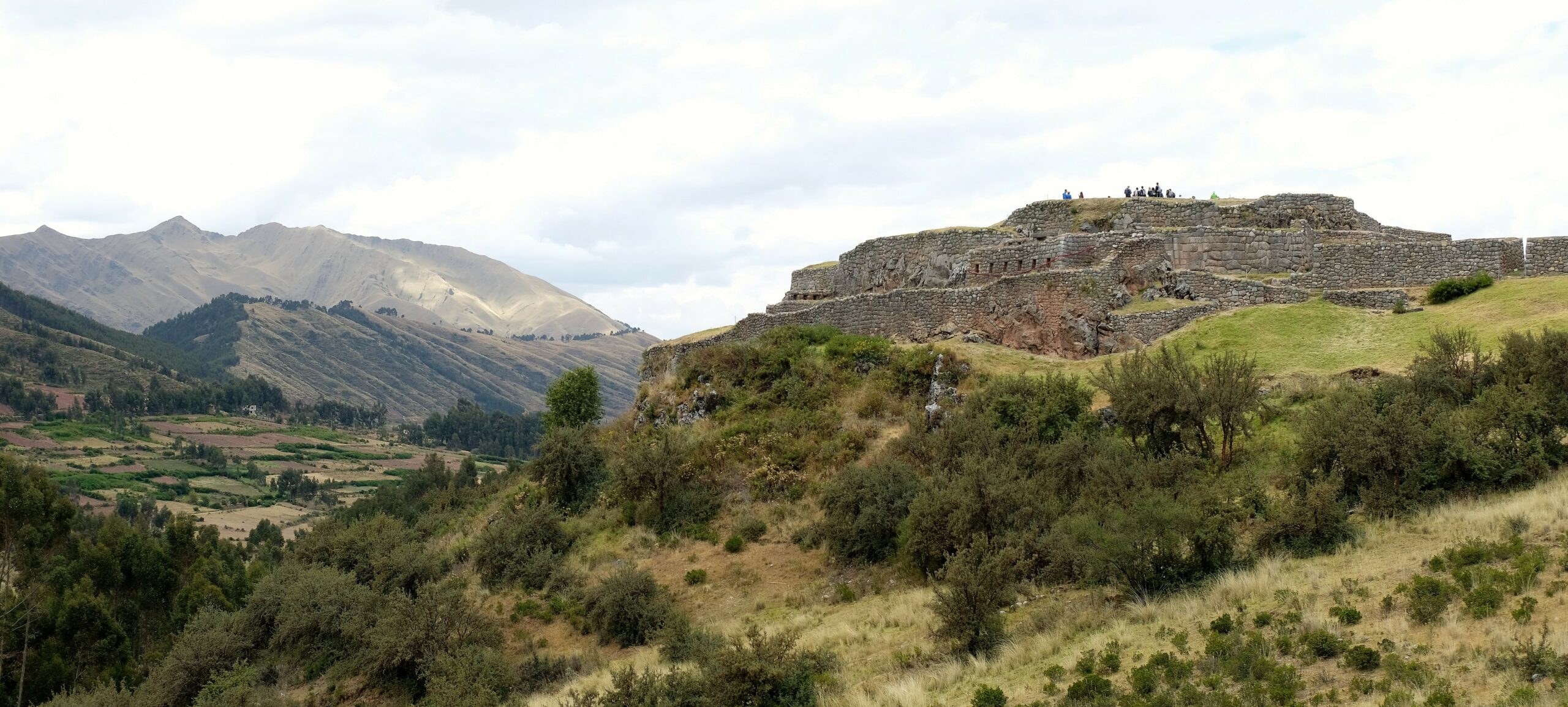

Yet again, Puka Pukara’s use isn’t 100% certain (like I said, maybe there is some doubt). Considering Tambomachay’s close proximity, Puka Pukara could have been used as lodging for nobles whilst still being partially used for military purposes. As I said in my prologue, when it comes to most Inca sites it’s full of if’s, maybe’s, could be etc. etc.
What cannot be denied is the expansive views from Puka Pukara of the valley below stretching out to the horizon. If people were bathing at Tambomachay, they weren’t getting much privacy as the area is fully and clearly visible from this vantage fortress.


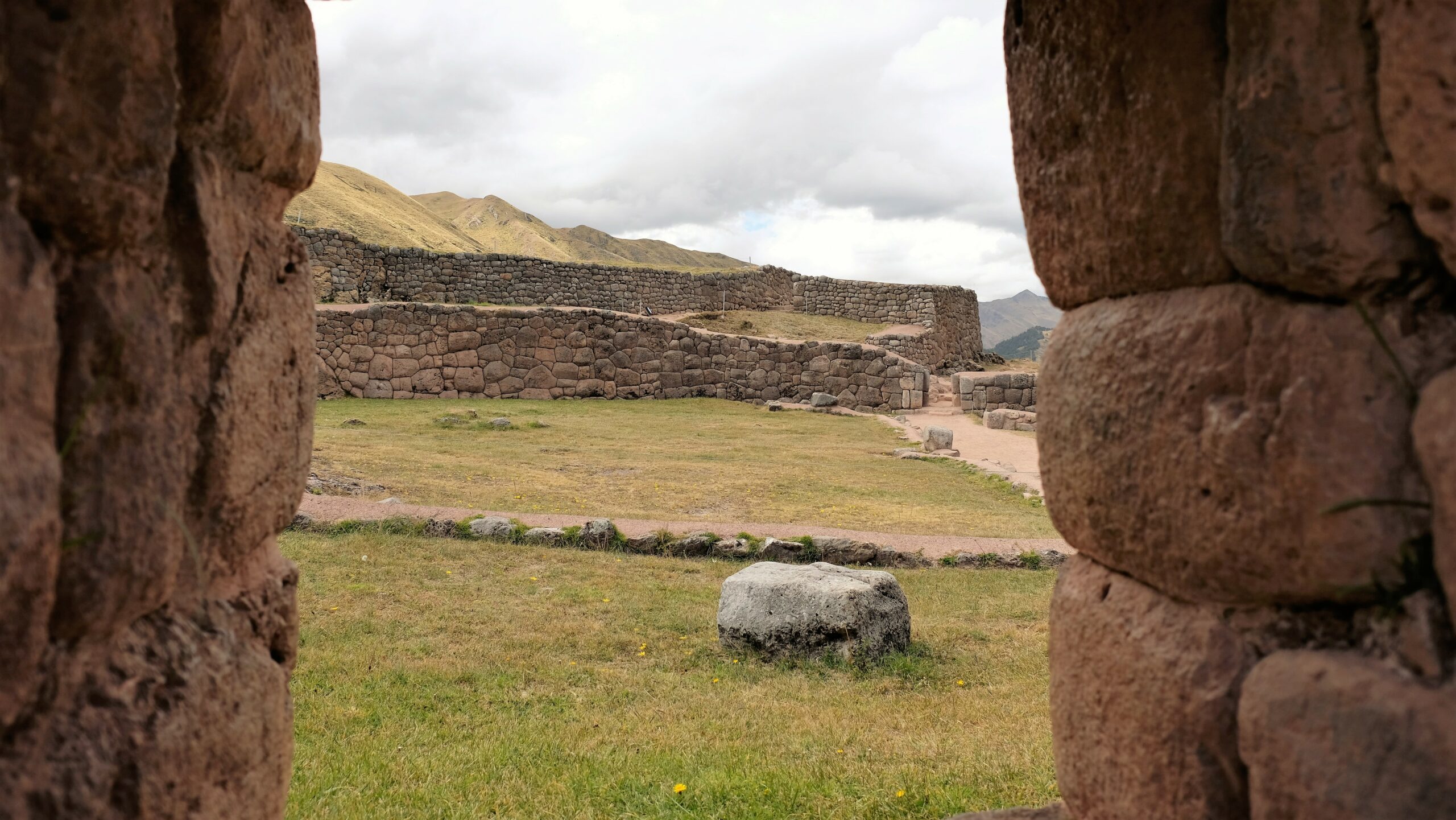
The walk to Qenqo
From Puka Pukara to Qenqo is around 4km, mostly either flat or downhill. Surprisingly I only passed a handful of people, it’s such a nice walk I don’t know why more people don’t do it. Word of warning; always be careful when walking along the road, some of the busses come quite close. Don’t be deterred, it’s a quietish road passing road curio shops and stalls. Going by car/bus doesn’t give you the opportunity to imagine you are walking along an Inca road ?. Something you may also miss are the three other Inca sites along the road. I didn’t see any access to them so didn’t try, something I regret not exploring.
One place I missed along the road, and confident it’s open to the public, is the Temple of the Moon (Templo de la Luna); an important religious site. That’s another disappointment and missed opportunity. Notwithstanding that I walked past it and past it a few more times heading out on some day trips! Guess I’ll need to go back then ?!
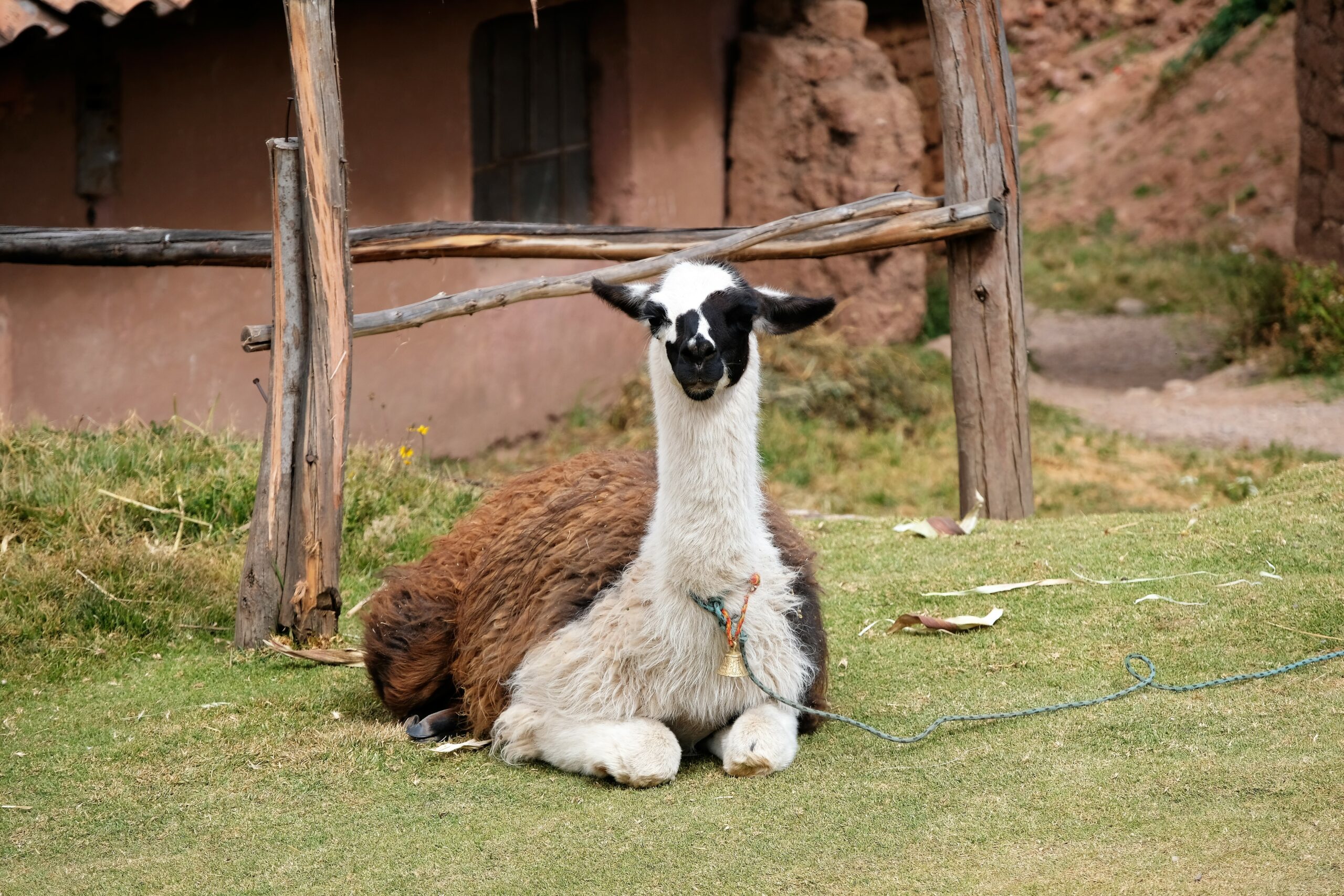
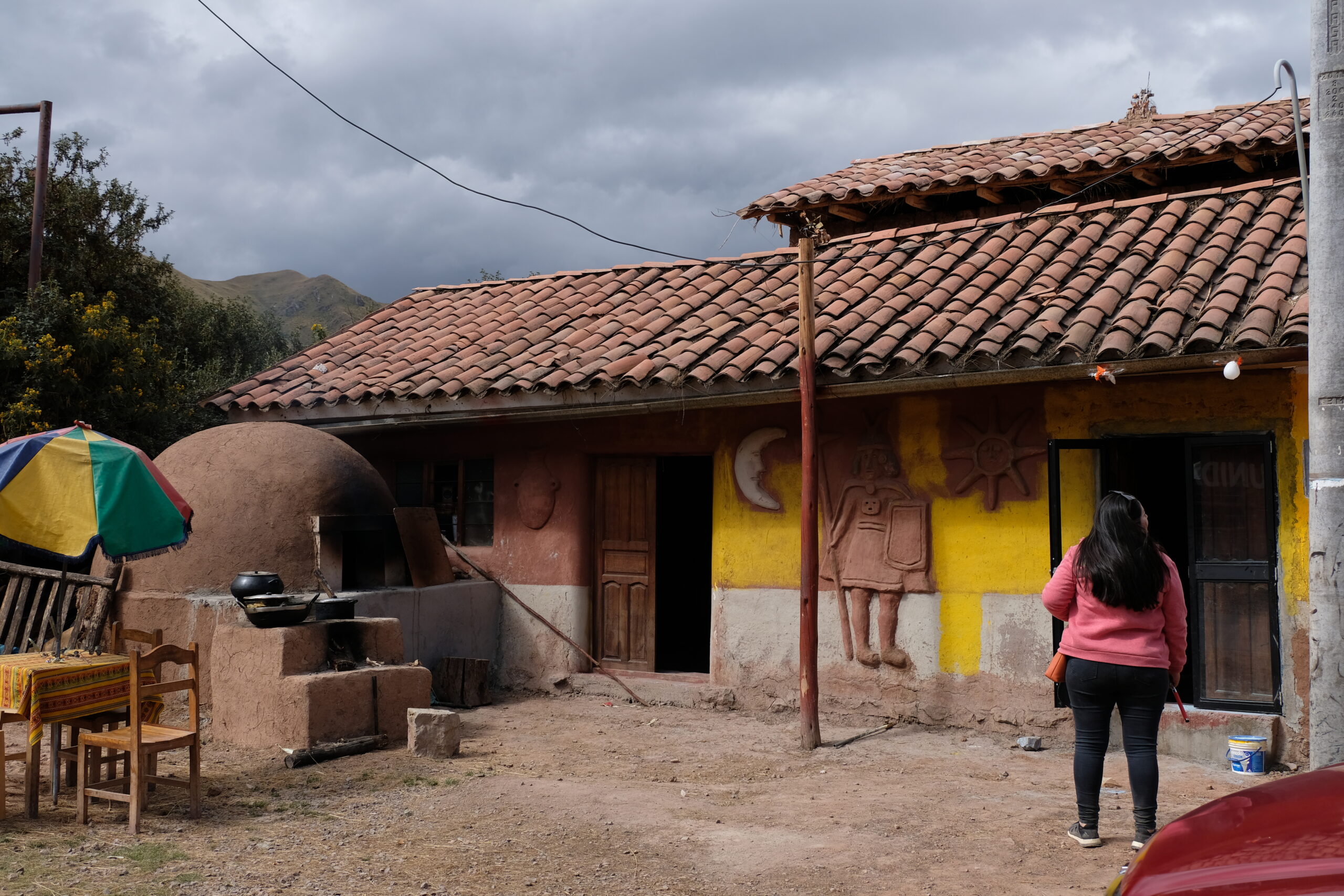

Qenqo / Q’enqo
You’ll need a ticket to visit Tambomachay, Puka Pukara and Qenqo (BTCI multi ticket), but not Qenqo chico, which is about 300-400m further down the hill. Qenqo isn’t its Inca name, that is long forgotten, though it is a Quechua word meaning “maze/labyrinth/zig-zag”. it has a few variations of spelling Qenqo, Q’enqo, Kenko or Quenco. There are zig-zag shapes cut into the top of the rock, but access to the top was closed when I was there. Compared to the previous two sites, Qenqo’s function isn’t questioned, it was a holy place; one of the largest huacas in the Cusco region.
Briefly, it is a natural rock mound with carved stone throughout. At the entrance is a single standing stone (about 4m high) which some say resemble (or represents) one or two puma’s, others say it looks like a frog. Around this stone are what remains of an amphitheatre layout, 50m wide. Near the centre of the rock mound a tunnel has been cut through. Inside this tunnel are what appears to be ledges, tables i.e. flat surfaces. No doubts that these are all manmade. On the other side of the tunnel are a few other tunnels and passageways cut through the rock, neither as “worked” as the main tunnel. I wouldn’t give myself 6/10 for the description, but hopefully what follows including the pictures will paint a clearer one.
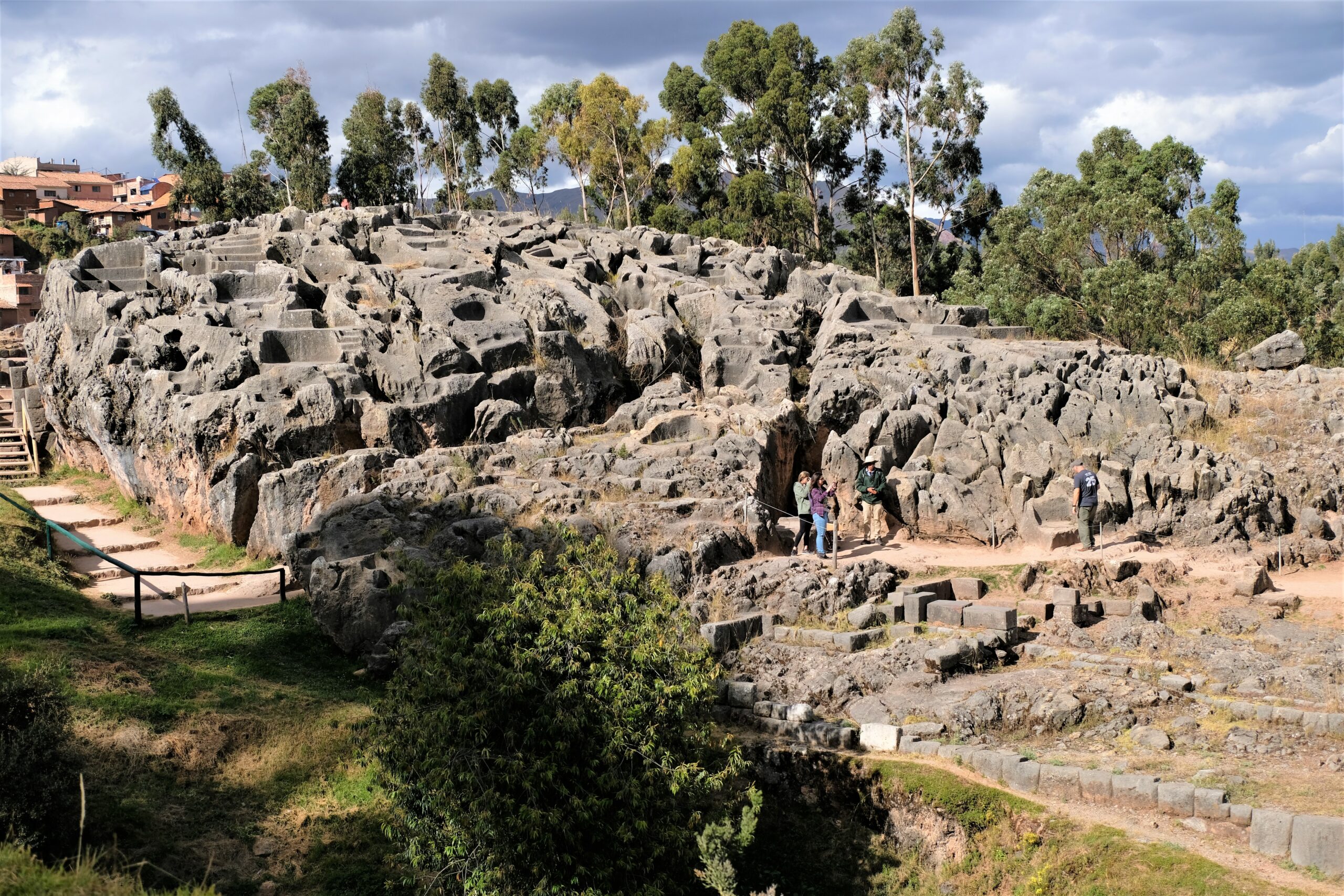
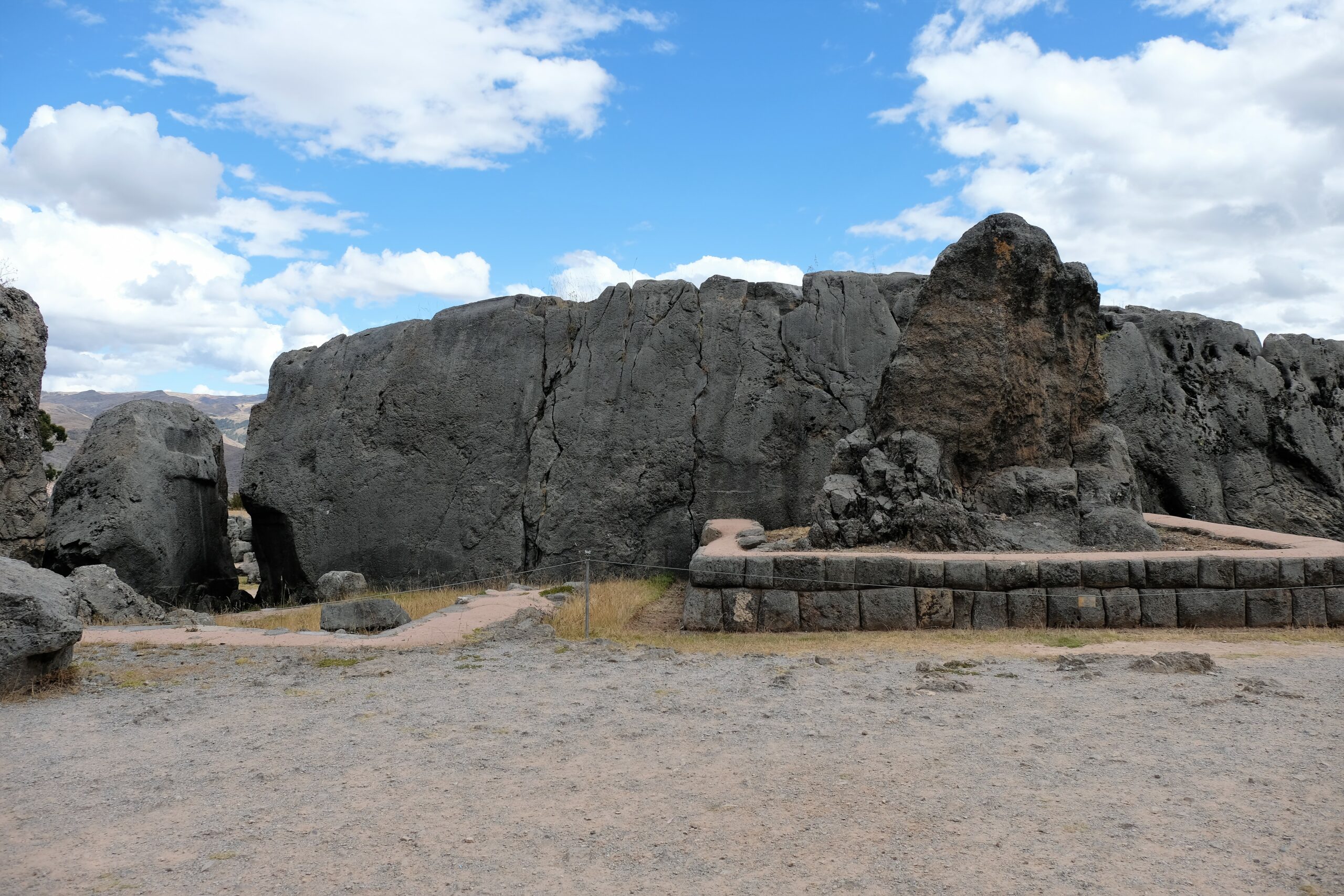
Destruction of Inca religious sites
I can’t stress enough how badly some of the Inca sites have been destroyed, especially Qenqo. Not like Luxor, Karnak or Petra where wear and tear mixed with vandalism and neglect have taken their toll. Qenqo (most religious Inca sites) has been destroyed to the point that only speculation remains of its use and significance. Comparatively Qenqo’s sheer quantity and quality of stone work i.e the natural stone has been carved, cut and shaped makes Sacsayhuamán look untouched. Similar to The Tired Stone over an area of 2 football pitches! Hmmm, I’ve written a bit and not said much.
Returning to my visit. I’m having a problem with describing Qenqo. Qenqo is a big rock, nearly every inch of the rock has been carved and shaped, but as a whole it seems with no order or purpose. If their aim was to carve stairs of various amounts, directions and size, then they succeeded. Obviously that wasn’t their purpose. It’s not only stairs, there are niches of various sizes, flat squares and rectangles of various sizes. There are round holes and little pillars (no more than 50cm high. I stared at it for ages, quite mesmerised.
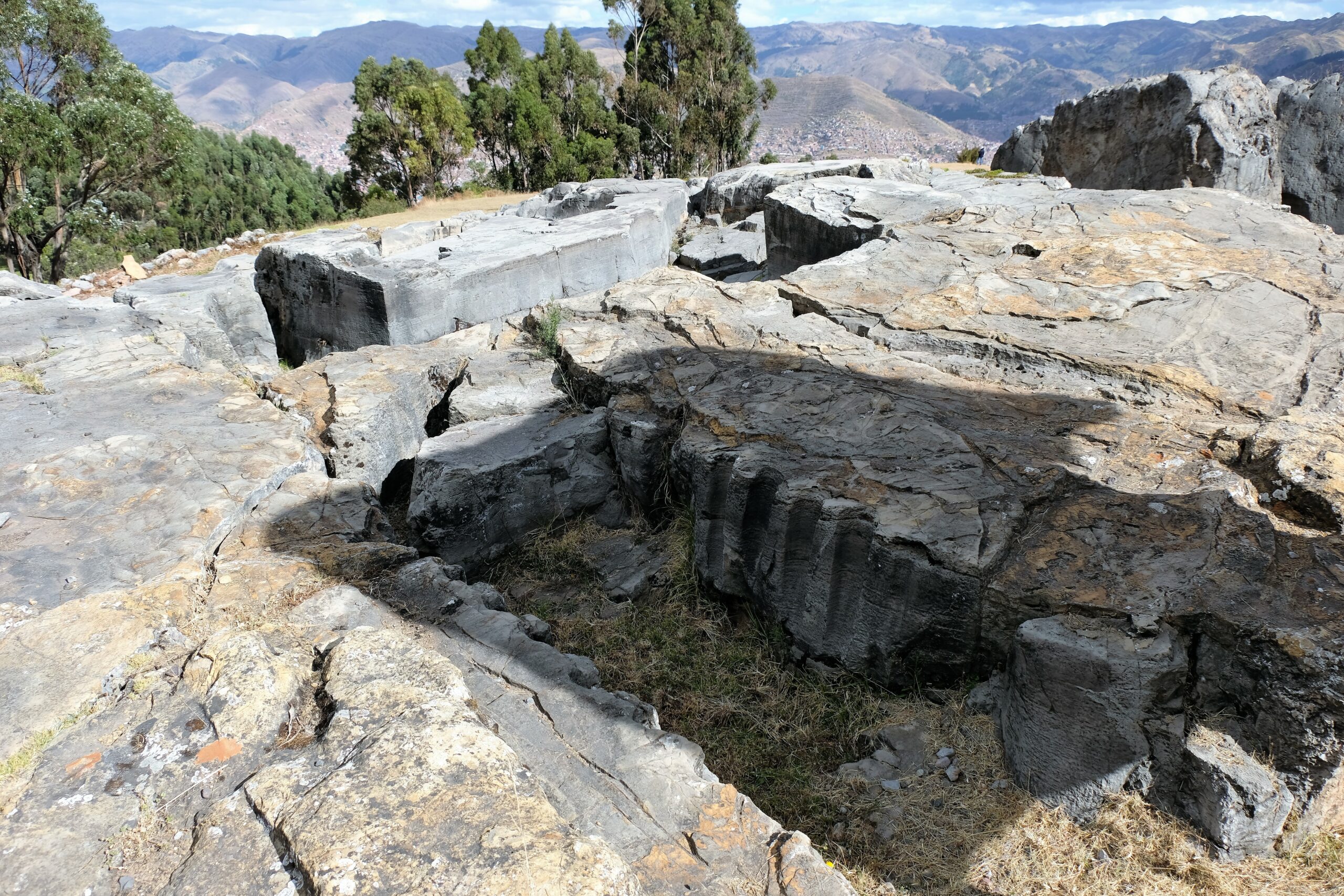

The altar room
Of the most fascinating parts of Qenqo is the chamber/tunnel. Walking into it you can’t be mistake that it is a “special” place. Inside the surfaces are smooth, with niches and table like structures. There are/were paintings on the some of the walls inside, I didn’t see any. They say here is where rituals &/or sacrifices were performed. Some off these rituals could have been mummifications, burials, llama and even human sacrifices. This may seem fanciful, but the Inca did practice human sacrifices like at Huaca Pucllana.
On top of the rocky mount there is a hole right above what is thought to be the main altar. Joining the hole (on top of the mount) is one of the zig-zag carvings which later splits into to. Archaeologists think either chichi (corn beer) or blood was poured here; some dripping through the hole onto the altar, the rest following the zig-zag crevice. Because of likely significance of this site, it could have been used to worship many Inca gods: Sun, Moon, Water, Earth and Stars. Additionally, because of the location of the altar it could have been a representation of the underworld. There are too many indications that this place was used for death rituals.
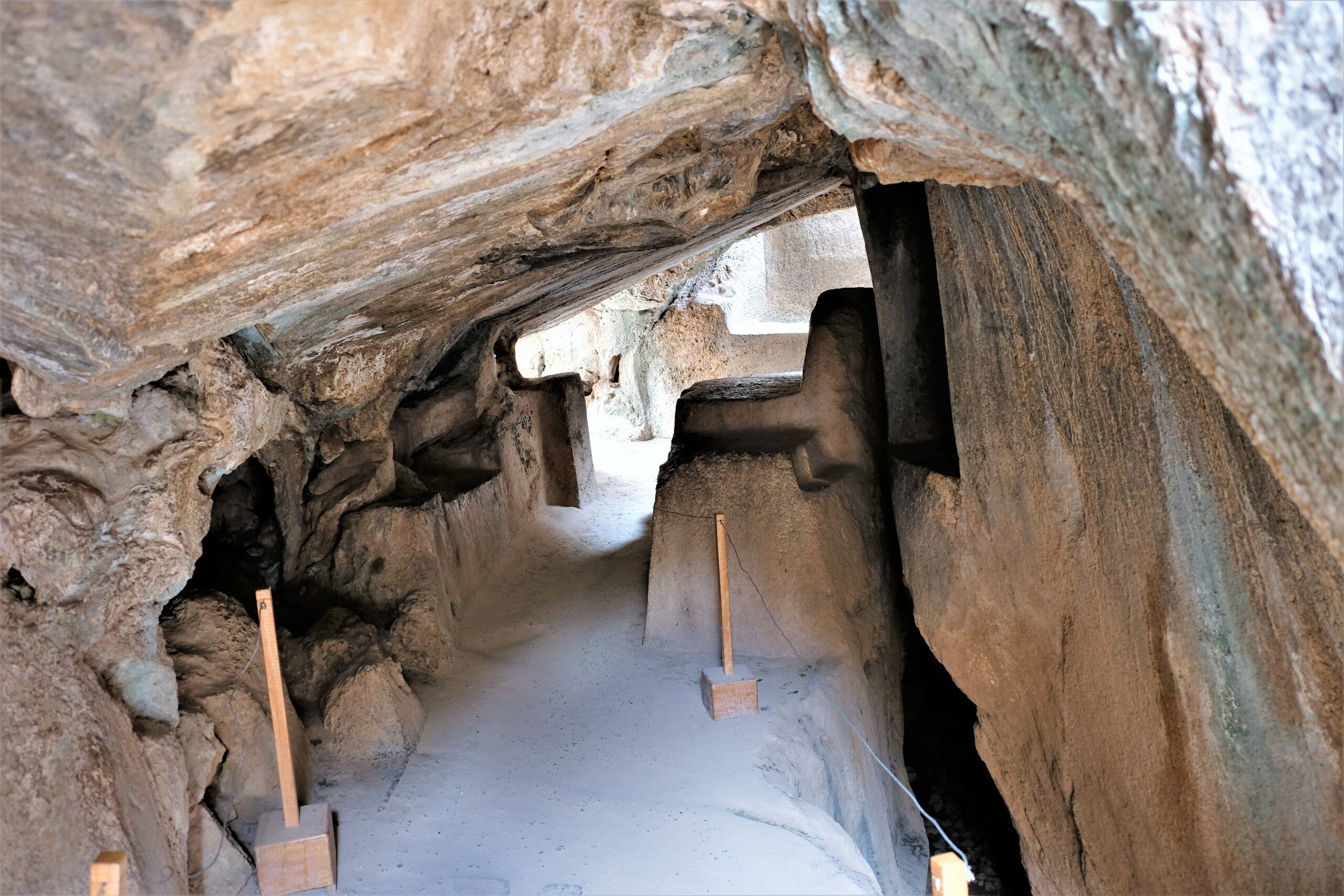
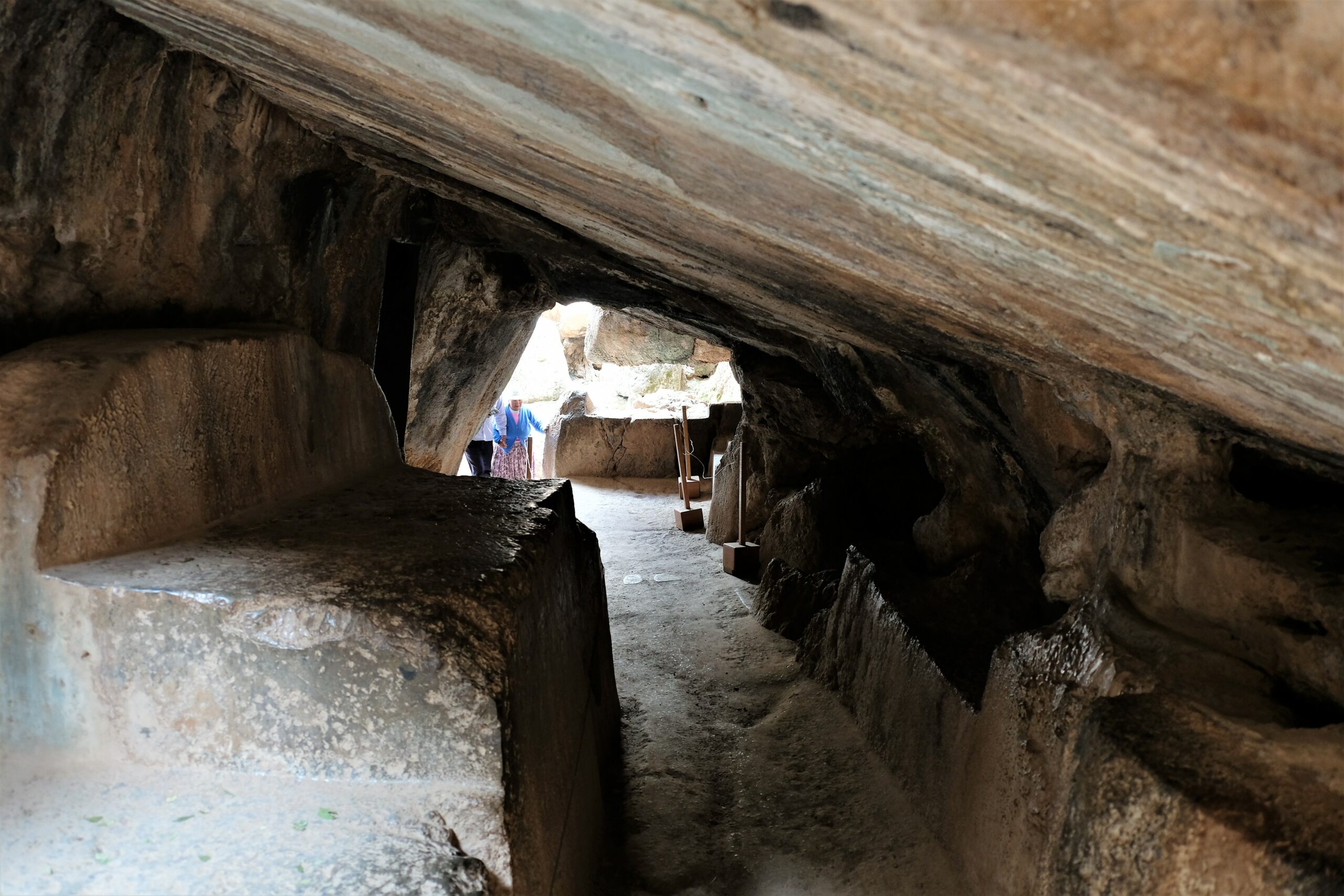
Qenqo Chico
Called little Qenqo, I’d hardly say it’s small. Realistically I’d say the area it covers is larger than Qenqo. Some people have suggested because of it near total destruction, it’s probable it was more important than Qenqo. Considering the high walled platform it was built on/around and the extensive rock/stonework I’d say this could be so.
More so than what I had seen before, here the rock is carved into three types. Firstly, the stair type cutting, however here the stairs look more rounded. Secondly, the square and perpendicular carving; these look more like niches cut into the rock. Thirdly and most commonly, are curvy and round cuts. These have a flow about them, they have an organic nature about them. Part of this third group are shout round pillars, and nearby short round shafts too. Both the pillars and shafts are not high nor deep respectively. Some of the holes are only a few centimeters deep but look like they’ve been drilled.
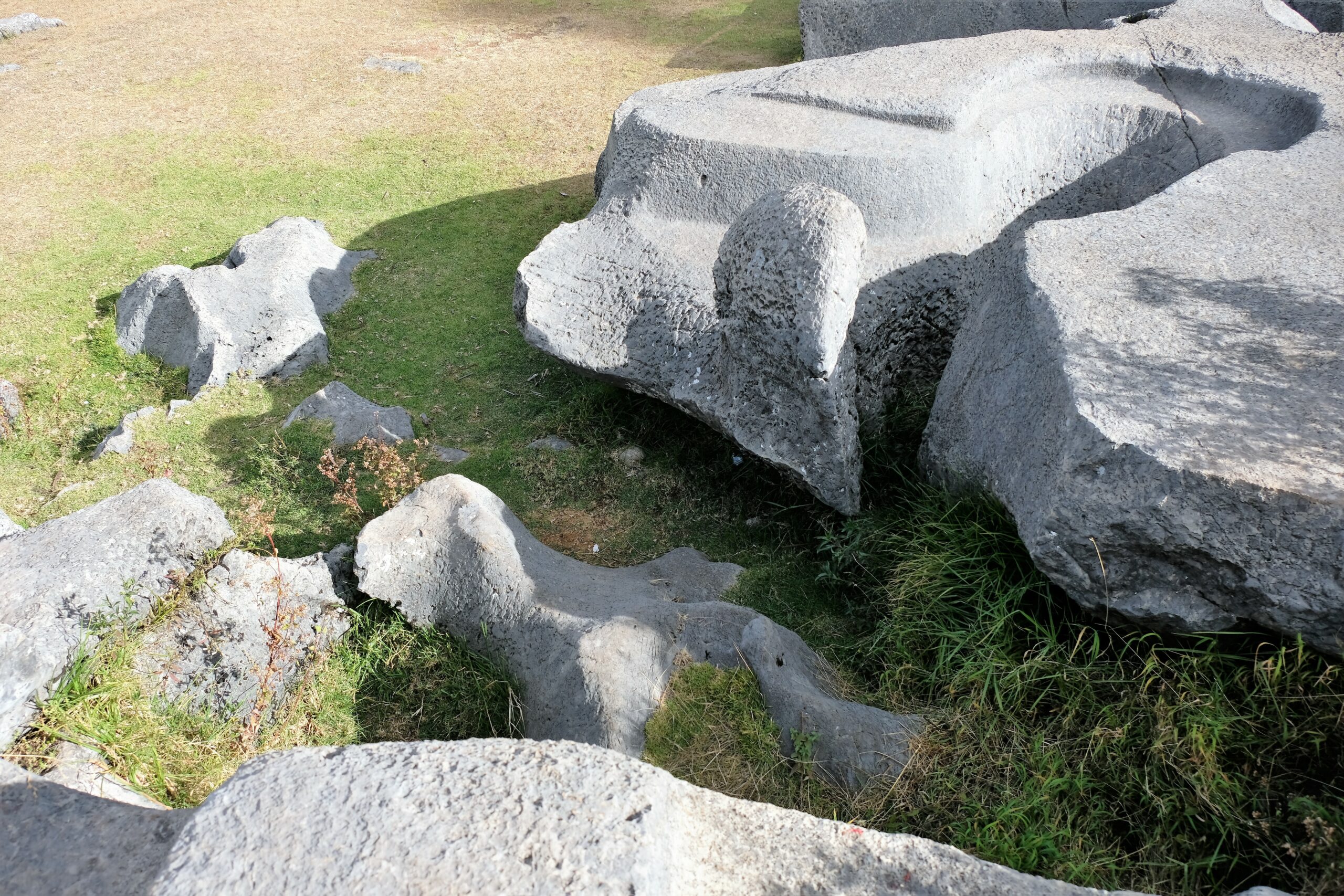
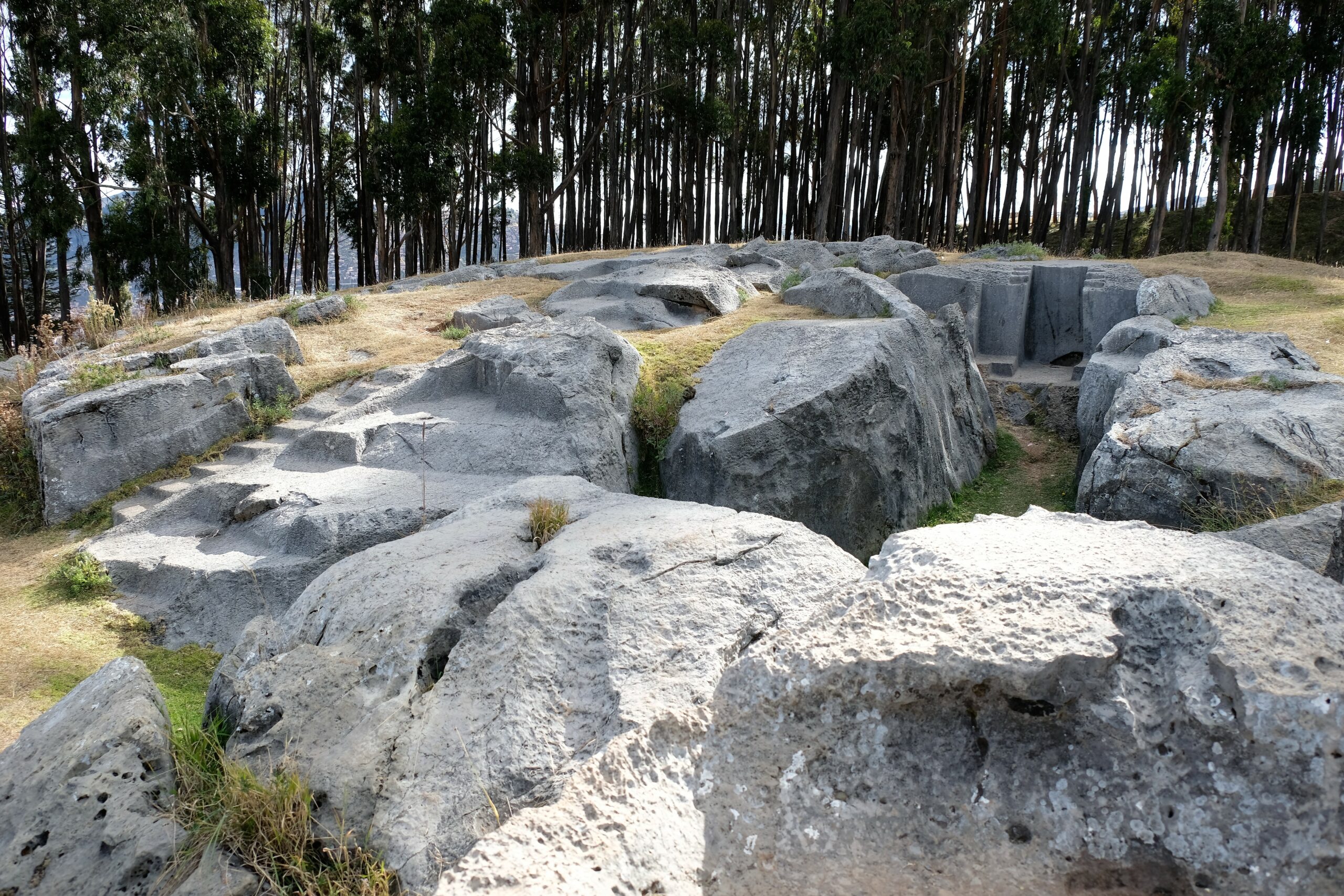
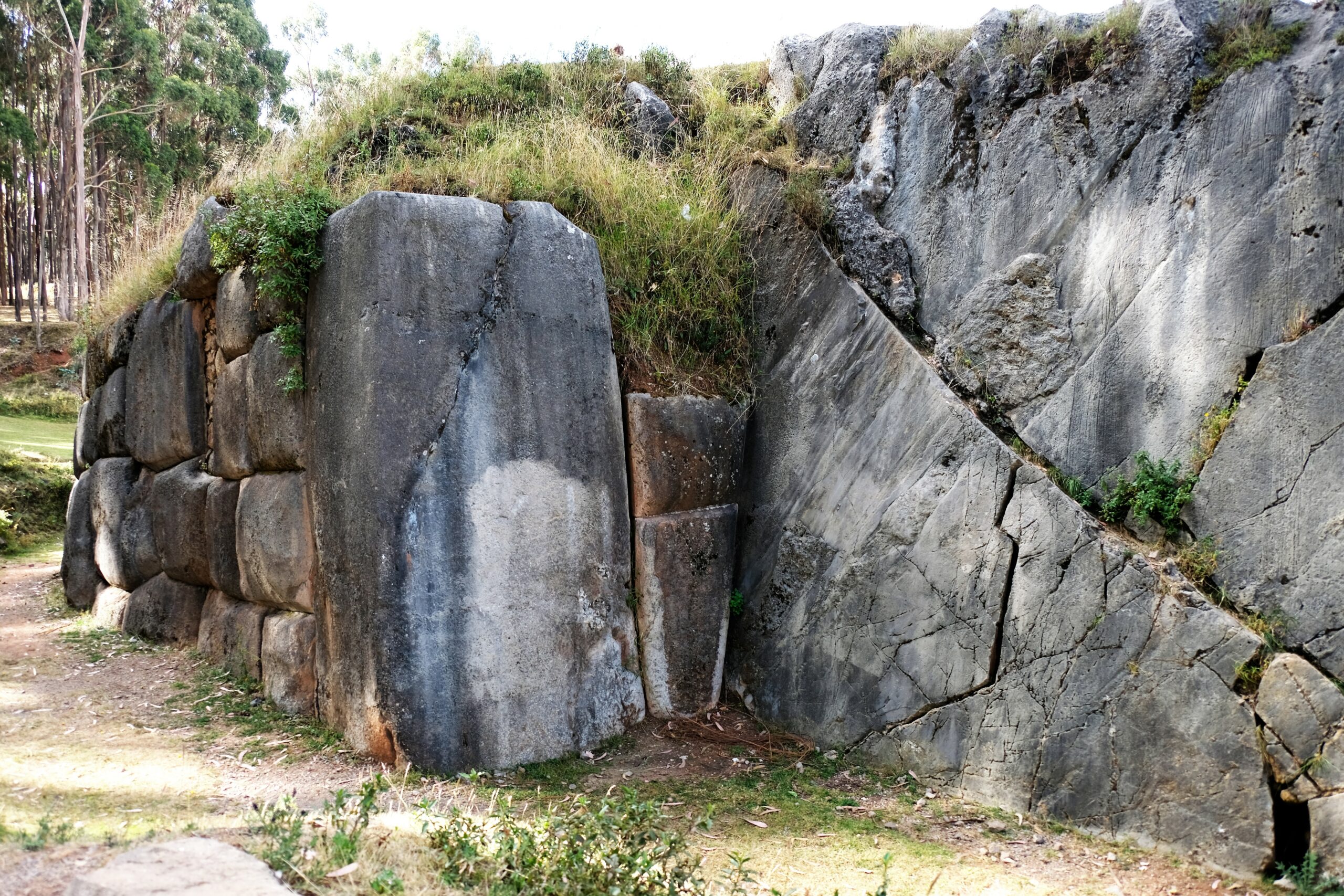
Recommendation
Finally, going back to what I’ve said in this and my previous post; if I could redo my first day of site seeing I’d do it in this order Tambomachay, Puka Pukara, Temple of the Moon, Qenqo and finishing the day off with the pièce de rèsistance Sacsayhuamán.

